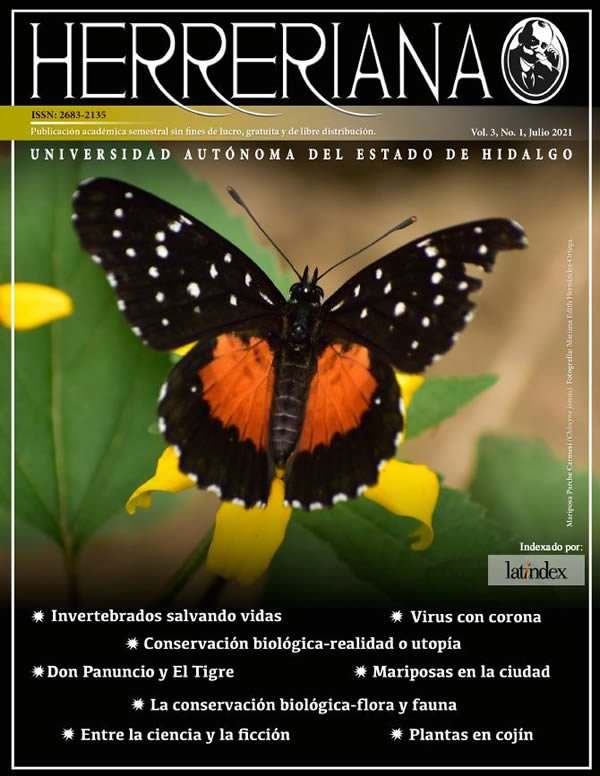Butterflies of the city
DOI:
https://doi.org/10.29057/h.v3i1.7001Keywords:
lepidoptera, urbanization, butterfly garden, conservationAbstract
Butterflies and moths are highly sensitive to changes in their habitat, therefore an increase in urbanization decreases their diversity and abundance, however, it is still posible to find them within and in the surroundings of urban areas because of the remaining green spaces. Because resources are limited in cities, those butterflies with generalist habits are more likely to survive. Fortunately, in cities of the Valley of Mexico there is a great diversity of these insects, and many species survive thanks to the existing native vegetation and the plants considered as weeds. Therefore, planting, maintaining and caring for host and nectariferous plants are some of the main measures to help their conservation.
Downloads
Publication Facts
Reviewer profiles N/A
Author statements
Indexed in
- Academic society
- N/A
- Publisher
- Universidad Autónoma del Estado de Hidalgo
References
Forman, R. T. 2014. Urban Ecology. Cambridge University Press, New York, pp. 1-30.
Kremen, C., Colwell, R., Erwin, T., Murphy, D., Noss, R. y Sanjayan, M. 1993. Terrestrial arthropod assemblages: their use in conservation planning. Conservation Biology, 7 (4): 796-808.
Pataki, D. 2015. Grand challenges in urban ecology. Frontiers in ecology and evolution, 57 (3): 1-6.
Pérez-Jarillo, E. 2017. Diversidad de mariposas (Lepidoptera: Rhopalocera) en un gradiente de urbanización en la Zona Metropolitana de Pachuca, Hidalgo, México. Tesis de Licenciatura, 130 pp.
Robledo-Ruiz, A. 2020. Jardines de mariposas, una oportunidad para acercarnos a estos maravillosos insectos. Recuperado de: https://www.inecol.mx/inecol/index.php/es/ct-menu-item-25/ct-menu-item-27/17-ciencia-hoy/515-jardines-de-mariposas-una-oportunidad-para-acercarnos-a-estos-maravillosos-insectos
Rzedowski, J. 2005. Breve reseña de la exploración botánica del Valle de México En: Rzedowski, G. C. y Rzedowski, J. (Eds.). Flora fanerogámica del Valle de México. Instituto de Ecología, A.C. y Comisión Nacional para el Conocimiento y Uso de la Biodiversidad, Michoacán, pp. 5-13.
Secretaría del Medio Ambiente (SEDEMA). 2020. Guía para la creación de jardines polinizadores. Recuperado de: http://189.240.89.18:9000/datos/storage/app/media/docpub/sedema/guiapolinizadores.pdf
Summerville, K. y Crist, T. O. 2001. Effects of experimental habitat fragmentation on patch use by butterflies and skippers (Lepidoptera). Ecology, 82 (5):1360–137.
Vargas-Fernández, I. F., Llorente-Bousquets, J. y Luis-Martínez, A. 1992. Listado lepidopterofaunístico de la sierra de Atoyac de Álvarez en el estado de Guerrero: notas acerca de su distribución local y estacional (Rhopalocera: Papilionoidea). Folia Entomológica Mexicana, 86: 41-178.


















